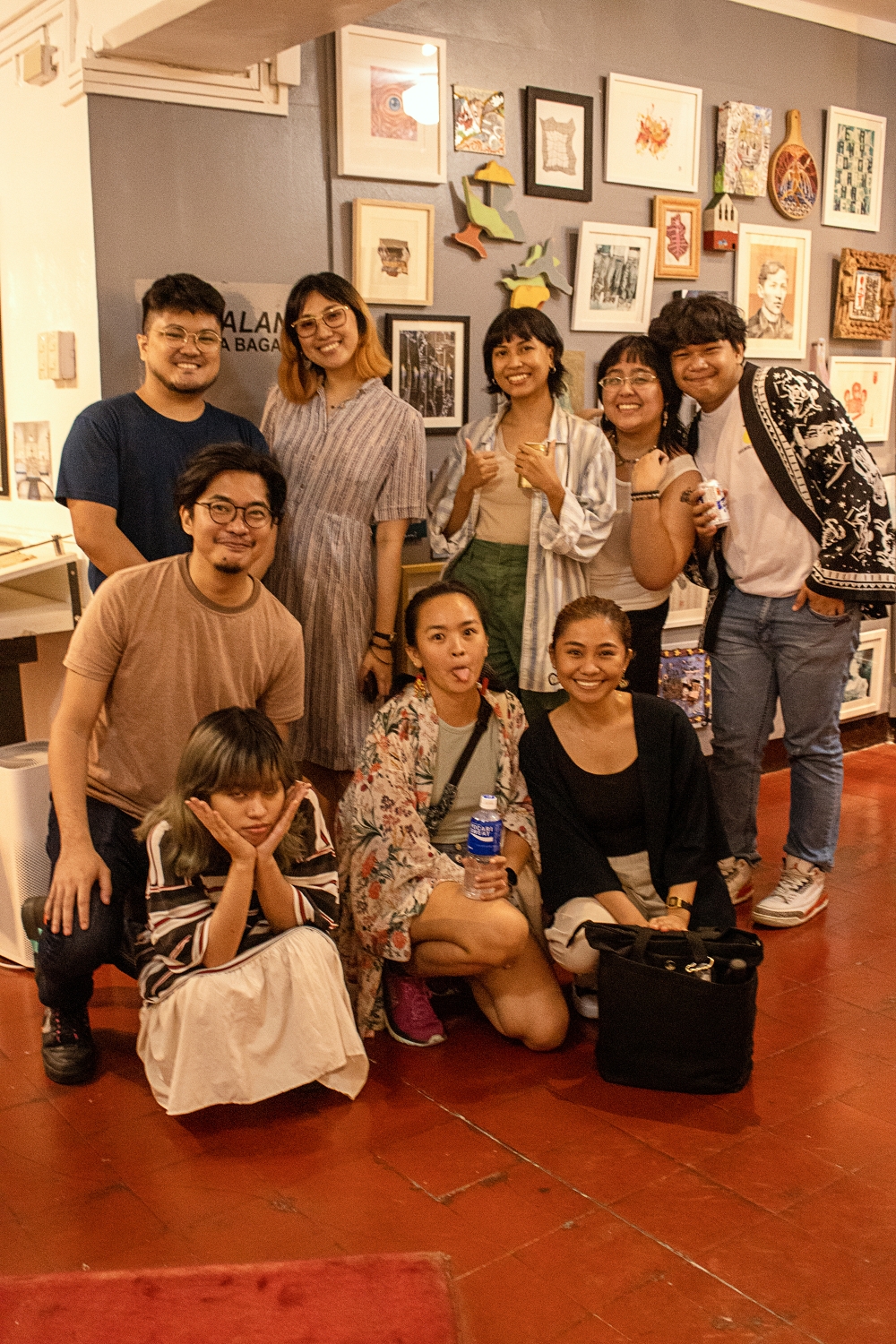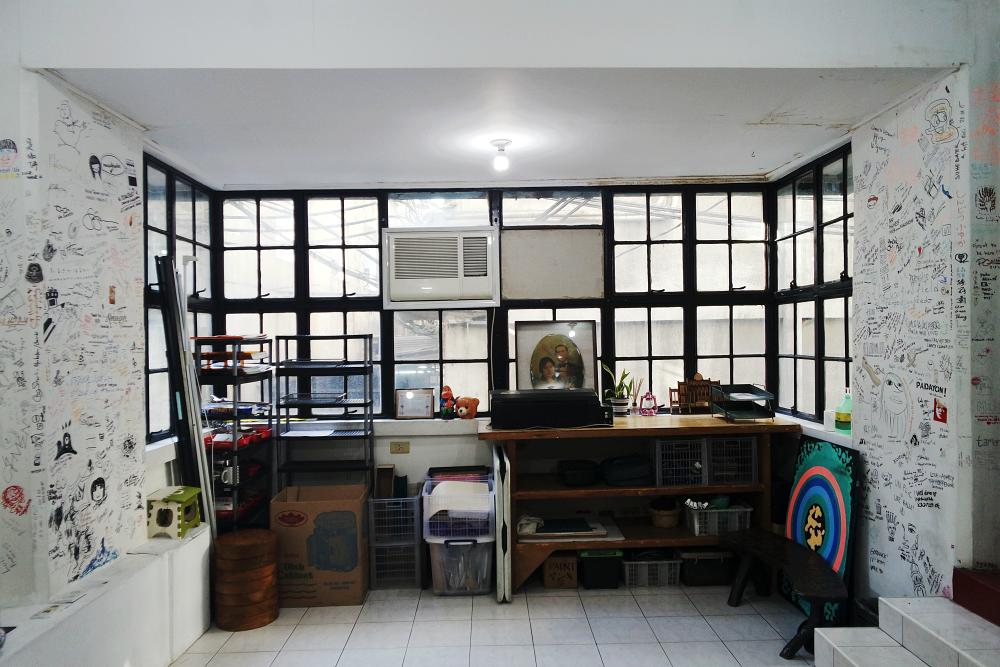98B COLLABoratory believes in art, collaboration, and community beyond commercial boundaries
For 98B COLLABoratory, an artist-run space and initiative based in Escolta, Manila, collaboration demystifies and democratizes the local contemporary art scene. By serving as a conduit for creatives—visual artists, filmmakers, chefs, musicians, curators—to converge, they hope to bridge folks from different disciplines toward meaningful art-making.
Their programming goes beyond exhibitions, holding workshops, community installations and kitchen, selling events, and site-specific installations in the capital’s erstwhile commercial district.

What began as a shared studio and apartment in Cubao in 2012 has evolved into its current space in the historic First United Building. “The usual expiration date daw ng artist-run spaces is three to five years,” shares Katherine Nuñez, visual artist and the executive director of 98B. “Yet we’ve been doing this for 10 years now.”
In a conversation with The Philippine STAR, the members of 98B, whose practices range from painting to contemporary forms, new media, curation, and graphic design, share the beginnings of the collective and what they hope for the art community in the Philippines.
THE PHILIPPINE STAR: Briefly introduce 98B Collaboratory. How did it all begin?
Julius Redillas, Co-Director and Studio Artist: As an artist, I'm very used to working alone, focused on a canvas most of the time. (98B) is a breather from my studio practice. It's different from a classroom or a white space where you are required to be someone else. I think of it as an outlet to form an idea, incubate, or experiment with stuff na usually hindi namin nagagawa sa studio practice namin.
Katherine Nuñez, Executive Director and Visual Artist: It’s worth noting that 98B started with a couple of artists in a house. That's why it's called 98B because that's the address of the house in Cubao. It is essentially a tambay space and the relationships fostered are quite organic. We're not a white cube space and we try to make things casual and relaxed. We do exhibitions and discuss art and how it is produced through different formats. We also work with a lot of artists from different backgrounds.

What’s the importance of cross-industry creative collaboration? Why is there a need to demystify art?
JP Deciembre, Curator: It helps democratize art. We’re trying to promote that art should be for everybody. When you look into most of our events, it’s open to anyone interested.
LK Rigor, Curator: Art can be intimidating, ‘di ba? Some people question, “Art ba ‘yun, just because it's in a museum?” We once organized a talk about sound and new media artists; a few months ago, we did a roundtable on care work. With us being an experimental platform, we get to show these practices within the art ecology, and it concretizes what art could be—especially considering we’re positioned in a historical place in Escolta where the general public can see.
Shara Francisco, Creative Director: I agree (that) collaboration allows art to be more accessible. It’s intimidating for a lot of people to start, call themselves an artist, or view their practice as an art form.
Frankie Lalunio, Program Manager: ‘Yung mga nakakausap din naming artists, usually naghahanap sila ng space to do things outside exhibitions. ‘Yung ino-offer naming collaborations are ways they can reflect more on their art.
Reading through your website, there seems to be an emphasis on ‘independent.’ Why is it important to be an independent artist-run space?
JR: It allows us to cater to different people. Hindi kami under an institution na kailangan magpaaalam, kaya in a way, naging venue siya to introduce our space to other advocates and activists working on the same cause.
KN: We're independent in the sense that we're not funded by the government. Not that we don't want to be funded—as a space, collective, and initiative, there is a need (for support). In the past decade, there has been a sense of precarity. We're not sure (until) when we can last. Pero the usual expiration date daw ng artist-run spaces is three to five years. Yet, we’ve been doing this for 10 years now—I think that counts as something. But in terms of working with other people (as an) onsite community, like with First United Building, ‘yung admin pa lang, we are dependent, to a certain extent, on them. That’s why most of our projects respond to the needs of the people (in Escolta).
JR: I’m quoting someone but we always say that we move forward at the speed of trust. That's the only reason we continue: we trust the people we've worked with.
What is your hope for Philippine art communities?
JR: I hope that people doing art in the sector will lead. At the moment, parang nasa kamay kami ng mga collectors, ng may mga pambili ng artworks, ng galleries. I am hoping that (we) the artists, the writers, the cultural workers, ang mag-lead.
KN: For artists locally to have more support that doesn't come from the commercial market. I’m hoping for opportunities for artists, writers, and curators to have the space to experiment and not necessarily create work that is object-based and sellable. It could take the form of an incubation space for their practice. The bulk of opportunities for residencies at the moment are from other countries. I’m also looking forward to funding grants, not just residences, for artists to continue working in their studios.
JD: My hope for the art community is the emphasis on care in whatever we do. To be involved in a project and be more collaborative because you consider how you interact and engage with the people you work with.
LR: I'm hoping for a more generous and open art scene. Parang gatekeeping is already imbibed in the structure, but it pays more to be generous in terms of showing how you can care for and support others. Especially in this field na hindi ganoon ka-institutionalized—at least lawmakers are starting to recognize the voices from the field but there’s still much more to do. If we have that kind of generosity to give space, listen, share resources, and support each other however we can, then I guess that could be a good step toward that.
SF: For art to be accessible and not as intimidating. We want hopefully (na) maging community-based at collaborative ‘yung art-making at hindi individualistic.
FL: Magkaroon ng consolidation of communities (and) have a space to say what we really need. We really need protection—precarious ‘yung state ng creative work sa Philippines and it would help if cultural workers could get heard.


